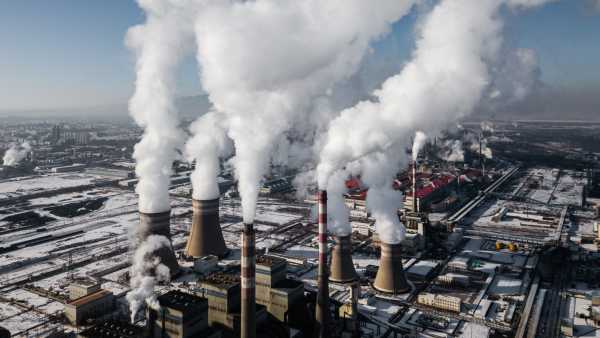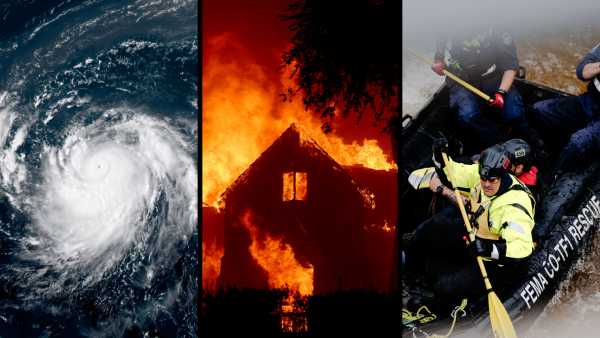
Saltwater flooding coastal forests kills trees like these rockroses at Blackwater National Wildlife Refuge on the Chesapeake Bay. (Photo credit: Will Parson, Chesapeake Bay Program)
Like giant bones embedded in the earth, clusters of tree trunks stripped of all bark are appearing along the Chesapeake Bay on the mid-Atlantic coast of the United States. These ghost forests are the disturbing remains of what were once groves of cedar and pine. Since the late 19th century, a growing swath of these trees has died along the coast, and they will never recover.
These tree graveyards occur where the land slopes gently into the ocean and salt water increasingly intrudes. Along the East Coast of the United States, in corners of the West Coast, and elsewhere, saltier soils have killed hundreds of thousands of acres of trees, leaving behind skeletal trees, usually surrounded by swamps.
What does the future hold for them? It depends on the conditions. As these dead forests change, some may become wetlands that provide important ecosystem services like storm protection and carbon storage. Others may become home to invasive plants or support no plant life at all, resulting in a loss of ecosystem services. Scientists are trying to understand how this increasing shift toward wetlands and ghost forests will ultimately impact coastal ecosystems.
Many of these ghost forests are the result of rising sea levels, says coastal ecologist Kerin Gedan of George Washington University in Washington, D.C., co-author of a paper on coastal salinization in the 2025 Annual Review of Marine Science. Rising sea levels can lead to stronger storm surges that dump saltwater on top of the soil. Drought and rising sea levels can change the water table along the coast, allowing saltwater to seep further inland, beneath the forest canopy. Trees deprived of fresh water become stressed by the accumulation of salt.
Still, the transition from living forest to wetland isn’t necessarily a negative event, Gedan says. Wetlands also play an important role in coastal ecosystems. And forest-to-wetland transitions have occurred during periods of sea-level rise in the past, notes Marcelo Ardon, an ecosystem ecologist and biogeochemist at North Carolina State University in Raleigh.
“You can imagine these forests and marshes dancing along the coast,” he adds.
Marshes provide many ecosystem benefits. They provide habitat for birds and crustaceans such as saltmarsh sparrows, marsh wrens, crabs and mussels. They also provide a niche for native salt-tolerant plants such as reeds and some grasses, which provide food and shelter for animals.
Marshes can also store significant amounts of carbon from the atmosphere. Plants absorb carbon dioxide through photosynthesis, while silt deposits hold other sources of carbon, such as dead leaves and small creatures. Along coastal rivers in southern Georgia, for example, brackish and salt marshes can sequester more carbon than the tidal forests they replace.
Salt marshes also protect inland ecosystems from storms, absorbing the brunt of high winds and storm surges while protecting the trees beyond. Recent research suggests that large marshes help prevent ghost forests from spreading further by stopping saltwater from seeping into the forest.
Not all salt marshes can replace the carbon-sinking capacity of a forest, however. Ardon studied the forests of North Carolina's Albemarle-Pamlico Peninsula. He found
Sourse: www.livescience.com





